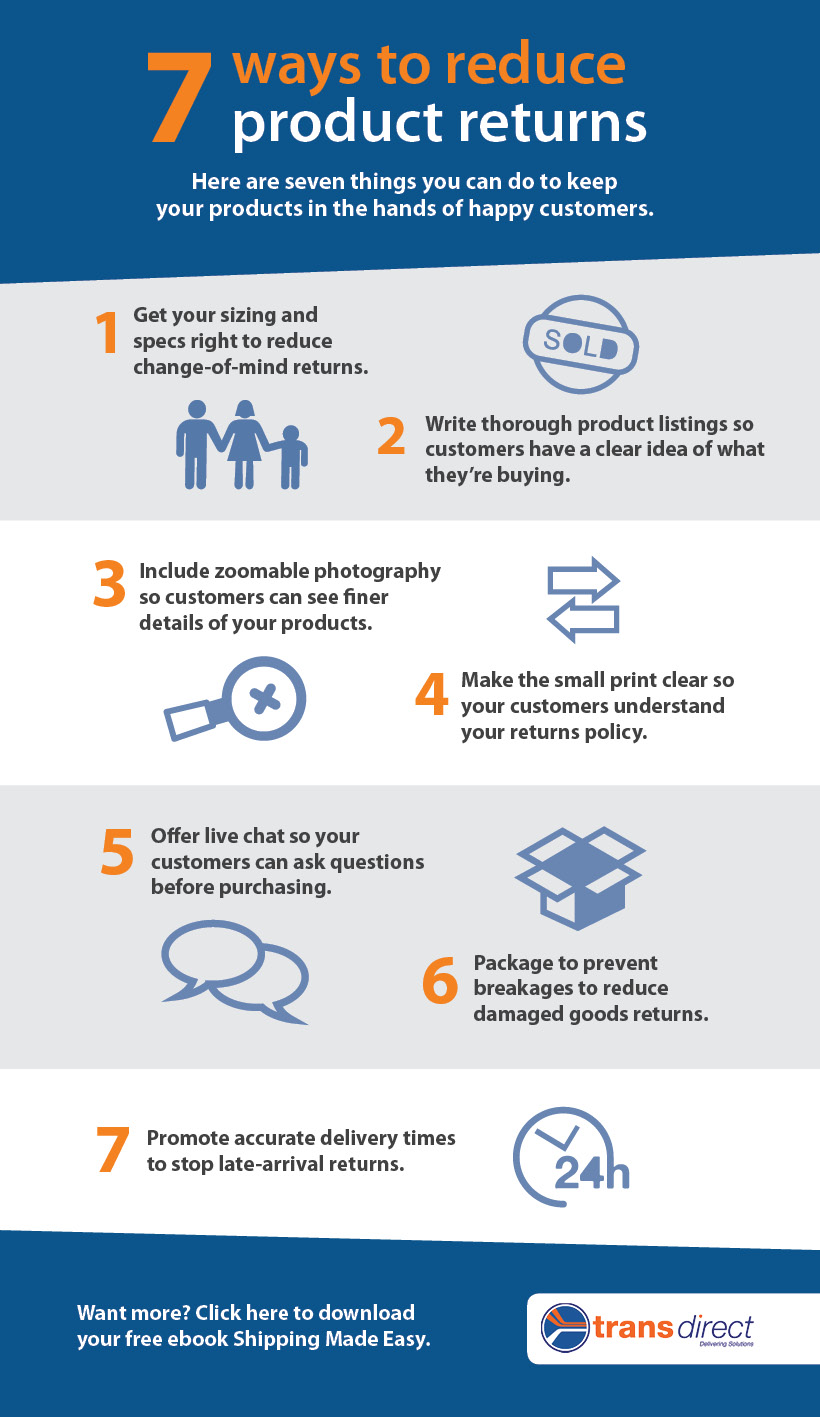
Dealing with excessive product returns costs you time and money, and runs the risk of building customer frustration that leads to poor online reviews.
Even if you’ve streamlined your returns policy, it still pays to focus some attention on reducing the number of product returns being sent back your way. Having an ecommerce postage strategy is a smart place to start when setting off on this postage adventure, and will help you avoid returns.
Here are seven things you can do to keep your products in the hands of happy customers:

1. Get your sizing and specs right
One of the most common reasons for change-of-mind returns is improper sizing. Ensure customers don’t misunderstand the specs of your products by providing clear dimension measurements or sizing charts.
For fashion retailers, providing an illustrated guide on how to measure up will go along way to reducing the number of ill-fitting returns you receive.
2. Write thorough product listings
Ensure you thoroughly describe all your products so customers have a clear idea of what they will be receiving.
In addition to expressing the benefits of your product, don’t forget to include detailed information on the type of materials used, how it is constructed, how colours appear in relation to photography used, the product’s weight and quality, and any maintenance or care instructions.
A Frequently Asked Questions format works particularly well for this.
3. Include zoomable photography
Quality photography is a must for all product pages, but consider going one step further to provide high-resolution images that customers can zoom to reveal the finer details of your products. And be sure to feature photos that showcase multiple angles of the product with close-ups of particular points of quality, such as stitching or leather grain, for example.
4. Make the small print clear
Ensure your returns policy is predominately displayed on your website and set out in an easy-to-read format using tables, subheadings and bullet point lists. If your customers know that you don’t offer change-of-mind exchanges, for example, they’ll likely be more careful when selecting products they know they can’t exchange.
5. Offer live chat
There’s no substitute for real-time customer service. Including a live chat function on your website gives customers the opportunity to ask questions or seek further information about your products. This will not only help you to close the sale, but also increases your customers’ confidence in their purchases, thus reducing the number of product returns you’re likely to receive.
6. Package to prevent breakages
Appropriate packaging for your products goes a long way to preventing damage in transit and the product returns that follow. Ensure your box size provides a snug fit for your product to prevent it moving around in transit, and select packaging materials that will absorb impact and create a protective buffer for fragile items.
You can also improve customer experience by pimping up your packaging.
7. Promote accurate delivery times
Always be realistic with the delivery times you promote. Consider any possible delivery time delays around Christmas or other popular seasonal holidays, and provide accurate delivery timeframes for regional and international buyers.
This will help customers determine whether a product will arrive in time to be gifted as a birthday or Christmas present and eliminate the need to return late arriving products. Provide your customers with clear, accurate and thorough information about your products and they’ll buy from you with greater confidence. Your team will love you too with less product returns stretching resources.
Sometimes returns are necessary, we’ve made it easier with our simple returns label creation feature.
Ready to start shipping? New customers get a quote, or existing members please sign in.
Want more postage strategies? Then why not download the entire guide:
